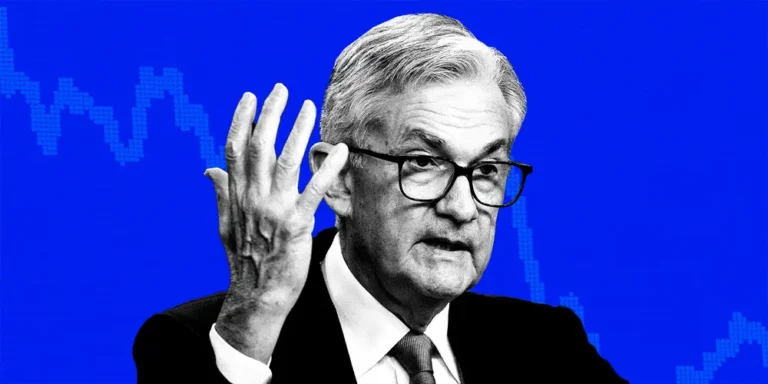Inside Goldman Sachs’ coveted summer internship for aspiring investment bankers, where there’s no such thing as ‘busy work.’

- Goldman Sachs’ summer internship program is harder to get into than Harvard.
- We spoke to a Goldman intern and partner about what the summer gig entails.
- They walked us through an average day, from the morning check-in to the financial modeling.
India Stephenson did what many college students do to calm down before their first day as interns at Goldman Sachs this summer.
She dialed her mother’s number.
“‘I’m so nervous,’ I said. ‘I’m not sure if I’ll be able to do this,'” Stephenson told Insider about the conversation the night before she started working for Goldman’s prestigious investment bank.
India, a rising senior at Princeton and member of the school’s squash team, is no stranger to prestigious settings or competitive tasks. She’d spent her college career as a politics major writing essays, not formatting financial models.
“I’d be lying if I said I wasn’t scared. “I was terrified,” she admitted to Insider. “I think it’s just par for the course when you try something new.”
Stephenson finished her Goldman internship with the consumer retail team last week and was offered a full-time position at the bank after graduation, which she accepted. Her mother, on the other hand, is less surprised by how far she has come since those early days.
“I was just talking to her yesterday, and she was laughing — listening to me over the course of the summer, how much I’ve learned, and how much more confident I feel eight weeks in,” Stephenson said of her mother.
Starting a new job is always intimidating, especially for those who are just starting out in their careers. This is especially true for students interested in investment banking, where more than just a good reference letter is at stake.Internships in investment banking are frequently used as a stepping stone to full-time positions. Students who perform well are asked to return after graduation to work as investment banking analysts, a position that pays more than $100,000.It‘s just one of the reasons these summer programs are so popular.
We take readers inside the internship experience in order to shed light on what the internship is like for future Goldman Sachs interns and intern applicants. Stephenson described her life as a summer analyst at the firm in an interview with Insider, from the podcasts she listened to on her morning commute to the type of work she did in her group and her favorite place to eat near Goldman’s 200 West Street headquarters.
We also spoke with Goldman partner Dave Friedland, who has been with the firm for about 25 years and began his career as an intern in 1997. He is now a member of the Investment Banking Executive Committee and is heavily involved in the firm’s recruiting efforts at Columbia and the University of Michigan. He aids in the selection of interns for full-time positions in his group, which focuses on mid-market corporate and financial sponsor clients.
Friedland discussed what a summer interning at Goldman is like, how it differs from when he started out decades ago, and how to leave with a full-time position.
Inside the internship program
According to a person familiar with the program, Goldman’s summer programs are particularly competitive — acceptance rates for internships across the firm, including investment banking, are around 1.5%.In comparison, Harvard’s acceptance rate is 3.4%.
Summer analysts at the investment bank typically spend one week in training and eight weeks on the job. According to Goldman’s statistics, the firm hosted 2,970 interns this summer, with approximately 500 of them being placed in the investment bank. According to the firm, the 2023 class represented over 500 universities, 83 languages, and 99 nationalities. They were assigned to over 50 Goldman offices around the world.
Most summer analysts participate just before their senior year of college in the hopes of receiving an offer to return as a full-time analyst after graduation at the end of the summer.The internship application process begins more than a year in advance, with interviews taking place when most candidates are nearing the end of their sophomore years.
However, some rising juniors are included in the internship classes, including Stephenson, who applied for her first Goldman internship during her freshman year of college.
She interned on the investment bank’s derivatives team last summer, which deals with corporate clients’ exposure to things like foreign exchange and interest rates.
“It was a hectic time, and it is still today, but I loved it.” I think being close to the market and sort of learning there, my first sort of introduction to financial services, was really enjoyable for me, especially as a politics major.”
She was invited back this summer, this time to serve on the consumer retail group, which advises major food, beverage, and fashion companies.
“A lot of the names I knew or had interaction with as a consumer, which is really interesting,” Stephenson said. “These companies have complex problems and questions that they need answered or solved.”
A day in the life of a Goldman intern
While the firm’s headquarters are in Manhattan, it has offices all over the world. The team with which an intern is placed often determines where they end up. An internship in the investment bank’s tech, media, and telecom (TMT) group, for example, could take place in San Francisco. India has spent both summers in New York City.
Stephenson took the subway to work last summer, which had its share of issues. This year, she moved into an apartment about 15 minutes’ walk from the office. This enabled her to start her days by listening to one of her favorite podcasts on her way to work each morning.
“I enjoy my morning walk to work.” “I put on my AirPods, listen to a podcast, and grab a Starbucks on the way,” she told Insider during her final week of interning. “Last summer, I took the subway. I did go the wrong way a couple of times, so I consider myself fortunate to be free of that.”
Her favorite podcasts included “The Toast,” a comedic pop culture podcast, and “All-In,” a show about the economy. Stephenson would arrive at her desk, next to two colleagues, around 9:30 a.m. Her first task of the day, she explained, was to check in with the full-time analysts for whom she was responsible.
“I’ll check in with my analysts on each team to see where we’re at and what we need to do on our various projects, which are all at various stages.” The rest of my day is dictated by the projects I’m working on. And it varies a lot, which is fun.”
For a good breakfast, Stephenson and other interns recommended Pick A Bagel in the nearby Conrad Hotel. She went to the food court at Brookfield Place, a shopping center near the office, for lunch. Naya, a Middle Eastern fast-casual restaurant, was her favorite there, which she visited “almost every day.”
“It’s a good quick run across the street.” “I get some sunshine and sit outside for a while,” she explained.
Investment bankers, including those at Goldman Sachs, are notorious for working long hours. But Stephenson claimed that every day was different for her.
“I could leave at 6:00 p.m. for a group-sponsored event, at 8 p.m. after dinner, or later.” It never stays the same, so there is no set time.”
She said there was plenty of time to socialize outside of the office, which contributed to her class being a close-knit group.
“We’ve all become good friends this summer, and so whenever we can grab dinner or spend a couple hours outside of work together, we totally do,” she explained. “It’s great that we’re all here in the city together, exploring.” We have time to hang out outside of work, which is great for getting to know each other.”
Interns do ‘real work’
Interns at some companies do phony work. At Goldman Sachs, this is not the case.
According to Friedland, there is no “busy work” or “shadowing” and the senior bankers rely on the interns to do real work.
“When people come here for the summer, they’re working on real clients on real projects, and their role on the team is a real role,” Friedland, who has been with Goldman for about 25 years, explained. “We don’t make up work to keep people occupied. We don’t have someone sit next to someone and observe and shadow them.”
One reason, according to Friedland, is that there are gaps to fill during the summer.
“For one thing, that’s how people figure it out. That’s how we know if they’re any good at it. But two are required. When summer rolls around, we have full-time employees who have left because they are moving on to whatever they do next. So there’s real stuff, and that’s always been the case.”
Stephenson agreed, saying that doing meaningful work is both rewarding and exhausting.
“As an intern, you’re very involved. You’re not doing busy work or running around doing unimportant things. “You’re fully integrated into these teams and add a lot of value,” Stephenson said. “Our work has real ramifications for really important companies, especially here.” It’s demanding, extremely rewarding, and extremely interesting work.”
What exactly does that work entail? In general, interns at investment banks may find themselves performing similar tasks for different clients, depending on their group. Making a consistent and neat presentation for a client meeting, taking notes on a client call, or editing a financial model are all common tasks. This summer, Stephenson said she saw a “plethora of deals at various stages.”
“It’s a lot of PowerPoint and Excel,” Stephenson explained. “I definitely take a lot of notes so that I can be a value-add and help out my analyst who might be doing something else.”
“They do a lot of financial analysis,” Friedland added. They assist in the creation of pitch books, client presentations, offering memorandums, and IPO documents if we are selling a company. They’re producing and assisting in the production of a lot of that.”
Because the interns are doing real work, Friedland believes it is critical that they learn to multitask. As previously reported by Insider, this is so crucial that it can make or break their chances of a full-time offer.
“You must be agile and adaptable because you will be working on four or five different projects for four or five different people at the same time.” That is extremely difficult. “That’s a real talent,” he said.
It’s a buddy system
Even in her second internship at the firm, Stephenson found the learning curve to be steep. Her lack of experience as a non-finance major, however, was not a barrier to her success.
“Because it is an apprenticeship culture, they want to teach you.” “They don’t expect you to know everything the first time you come here,” she explained. “To be successful, you simply have to be extremely willing to engage with that.” And you get exactly what you put in. If you put in the effort, put in the effort, and demonstrate that you are a truly curious thinker, you will be rewarded and have an amazing experience.”
Stephenson advises future interns to use Goldman’s “buddy” system, as she did. Each intern is assigned a “buddy” — usually a first- or second-year analyst who assists interns with everyday questions and conundrums. When Stephenson was nervous before going to the desk, for example, she was open with her colleague.
“She and I talked the week before I started, and I was so honest,” Stephenson explained. “I told them I’m really nervous and don’t know how to model.” “Don’t worry about it,” she said, “I’ll teach you everything you need to know.”
Stephenson also stressed the importance of seeking mentors outside of the buddy system. She, for example, maintained contact with her boss on the derivatives team, a Princeton alumnus, from last summer.
“I think it’s really lucky to have someone in your corner who you feel has your best interests at heart,” she said. “Having really strong mentors is common here.” I’m extremely fortunate to have found a couple.”
The job is harder than it used to be
Friedland interned at Goldman Sachs in the late 1990s while attending Columbia University for his MBA. The internship was 12 weeks long back then.
He believes that with the rise of the internet and social media, the stakes for serving clients have risen.
“When I first started, simply gathering information and summarizing and presenting it to clients was valuable. Clients now have access to all of the information they require, including basic information, from anywhere. Sharing information is no longer sufficient. As a result, adding value has become more difficult.”
On the plus side, he said, work is much more flexible than it was even five years ago.
“There was no technology to work from home.” And I don’t mean working from home, where you don’t have to go to the office five days a week. I mean, you wake up on a Sunday, you have two hours before you go do something fun, and you just want to get it done. When I was an intern, you had to take the subway to work because you had to sit in front of your computer. You couldn’t do it from your house. And so, when you have a little bit of work to do, I think the flexibility to do it from wherever you are is much greater now than it was previously.”
Nobody is watching you
Friedland wants interns to understand that staying at your desk late at night doesn’t really help you.
To be sure, if your entire team is working tirelessly to complete a presentation for a client meeting the next day, you should probably stay until the job is completed. However, staying late for the sake of appearances may not get you very far because the senior bankers who make hiring decisions do not have time to keep track of everything the interns do.
“Nobody’s watching you,” Friedland said. “I mean, the truth is that senior citizens are constantly traveling to clients.” Nobody here is keeping track of how long they’ve been here. We keep track of whether or not they completed their work.”
One major reason for the “face time” culture stems from the premise that firms have limited full-time positions to offer analysts (especially in a down year). However, Friedland, at Goldman, stated that this is not the case.
“The honest truth is that we have enough capacity for everyone,” he said. “We don’t come in and say, okay, there’s 24 of you, but there’s only room for 15 and draw a hard line.” People don’t believe it, but it’s true.”
Of course, not everyone receives an offer. (Insider detailed Friedland and Stephenson’s tips for securing a return offer here.) But, he hopes, this knowledge will pave the way for more interns to enjoy their experience.
“People often say, ‘culture comes from the top,’ but it also comes from the bottom,” he explained. “Having a group of juniors who are really excited and enthusiastic changes the dynamic for the group and makes everybody happier.” So, even though I’m a partner and have been here a long time, I spend a lot of time on our summer intern program. More than one might believe from the outside.”






